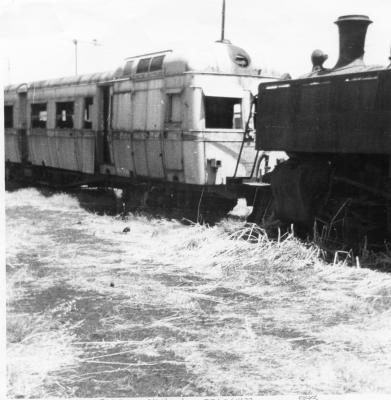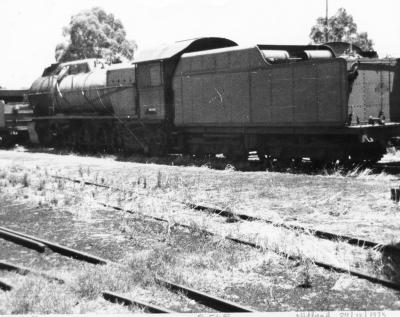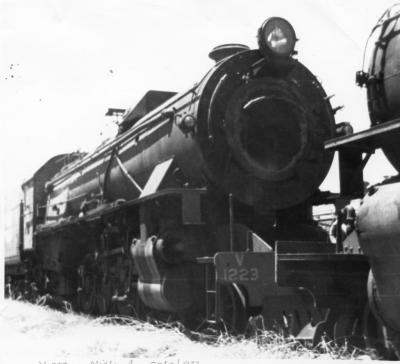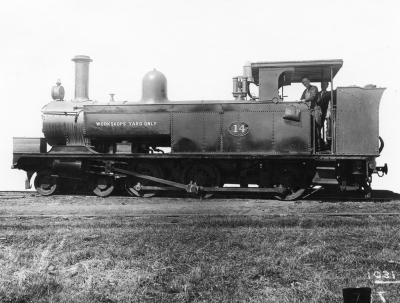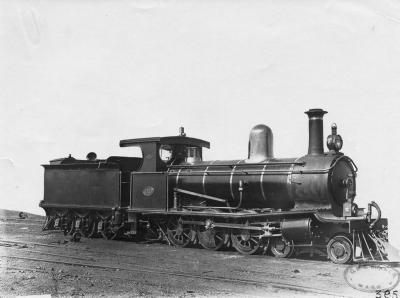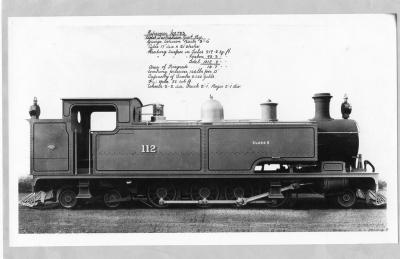Dining carriage
1914 - 1917D20 is 65 feet long and 10 feet wide with a timber body on a steel underframe. It is on standard gauge bogies. The exterior timber is matchboard ply and is painted chocolate brown with cream paint along the window line. The timber roof is covered in canvas and sealed with paint. Along the clerestory roofline are leadlights the full length of the saloon.
The interior is split into sections with a dining saloon seating 40 people ( 10 tables with four loose upright chairs per table). The other end of the carriage is split into a passage and the kitchen serving area. The passage has a pressed metal ceiling whereas the saloon has had that removed. The saloon is timber lined with double glazed windows. The kitchen has a stainless steel electric range with adjacent bain marie and enamel painted refrigeration.
The standard gauge Trans Australian Railway was constructed between Port Augusta and Kalgoorlie from 1913 and 1917. It had been one of the ‘carrots’ offered to the colony of Western Australia to entice it to federate with the other Australian states. The first through train was run in October 1917. This carriage was one of four original Trans Australian dining cars built in 1917 for the Commonwealth Railways (CR). D 20 was built by A.Pengelley & Co. on the underframe of the Western End (Kalgoorlie) construction train Stores car. (The frame had been constructed by Westralia Ironworks in 1914.) Originally the carriage seated 3 diners across the carriage but demand for travel was such that at the beginning of 1920 the dining cars were all altered to seat 4 across i.e. a total of 40 diners per sitting.
Carrier air-conditioning was not fitted until 1937, and is still intact in the carriage. With this installation the leadlight windows were boarded over and the clerestory roof was ‘enclosed’ to provide a flat ceiling and channel for air flow. The kitchen had a major re-fit c.1950 with the provision of electric cooking and refrigeration facilities. Despite the changes, the body of the saloon dates back to the earliest days of the Trans Australian Railways.
Between 1961 and 1981 D20 spent approximately sixteen years operated by CR on narrow gauge i.e. for use on the ‘Ghan’ to Alice Springs. From late 1970 to early 1972 D20 was on standard gauge, no doubt to meet the increased demand for interstate travel after the standard gauge reached Perth itself, thus eliminating the change of trains at Kalgoorlie. In September 1981 D20 was allocated to dining car on a breakdown train. By 1994 it had been placed in storage in the Port Pirie carriage shed. In 1995 Australian National (formerly CR) called for expressions of interest in the carriage from selected railway heritage groups across Australia and it was then offered to the Australian Railway Historical Society (ARHS) in WA. It was transported to WA in 1996. After storage at Forrestfield Railway Yards, D20 was moved to the Midland Railway Workshops in late 1998. It was restored as a Centenary of Federation project by ARHS volunteers and returned to operational service on the “Federation Train” in October 2001.
Restoration work included the ‘opening’ of the clerestory roof, the restoration and exposure of the leadlights, timber work was treated with some minor replacement, windows reglazed and some chairs were made to match the originals.
Details
Details
The CR crest is blasted onto the glass panel of the saloon end door.
Classified by the National Trust of Australia (Western Australia)
Pengelly & Co were in Edwardstown South Australia and Westralin=an Ironworkds in North Fremantle Western Australia
D 20 has rarity value as the only remnant of the Western End (Kalgoorlie) construction train in WA. As an original Trans Australian Railway dining car it represents the dining cars of the line and has historic significance for its links to the Federation of Australia. D20 has high level of authenticity and is the most complete, and is in the best condition, of the three remaining 1917 dining cars.
Other items from Rail Heritage WA
- Bullion van
- Steam locomotive Katie
- Steam Locomotive
- Cup Cue Railway Refreshment Rooms
- WAGR Governor class railcar at Midland Workships
- WAGR S class at Midland Workshops
- WAGR Pm class at Midland Workshops
- WAGR Governor class railcar at Midland Workshops, side view
- WAGR V class at Midland Workshops
- WAGR B class at Midland Workshops
- WAGR G class
- WAGR K class Builder's Photo
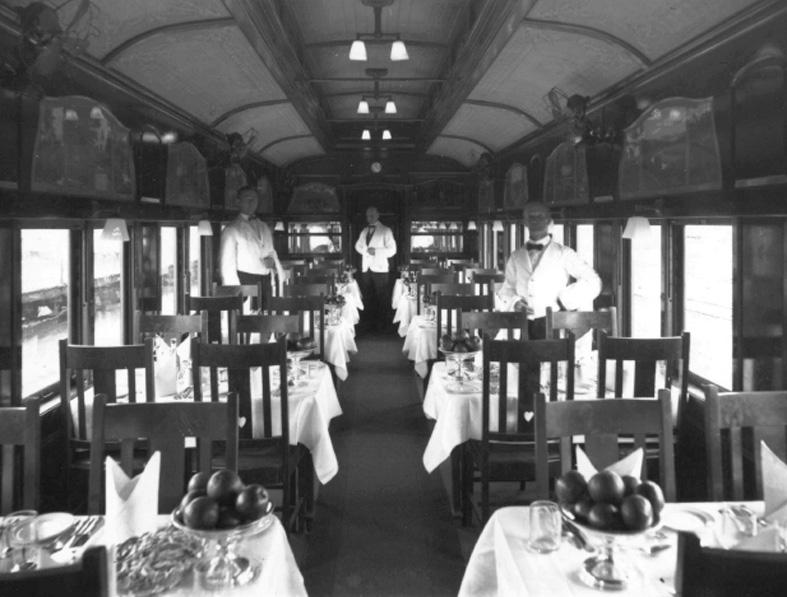
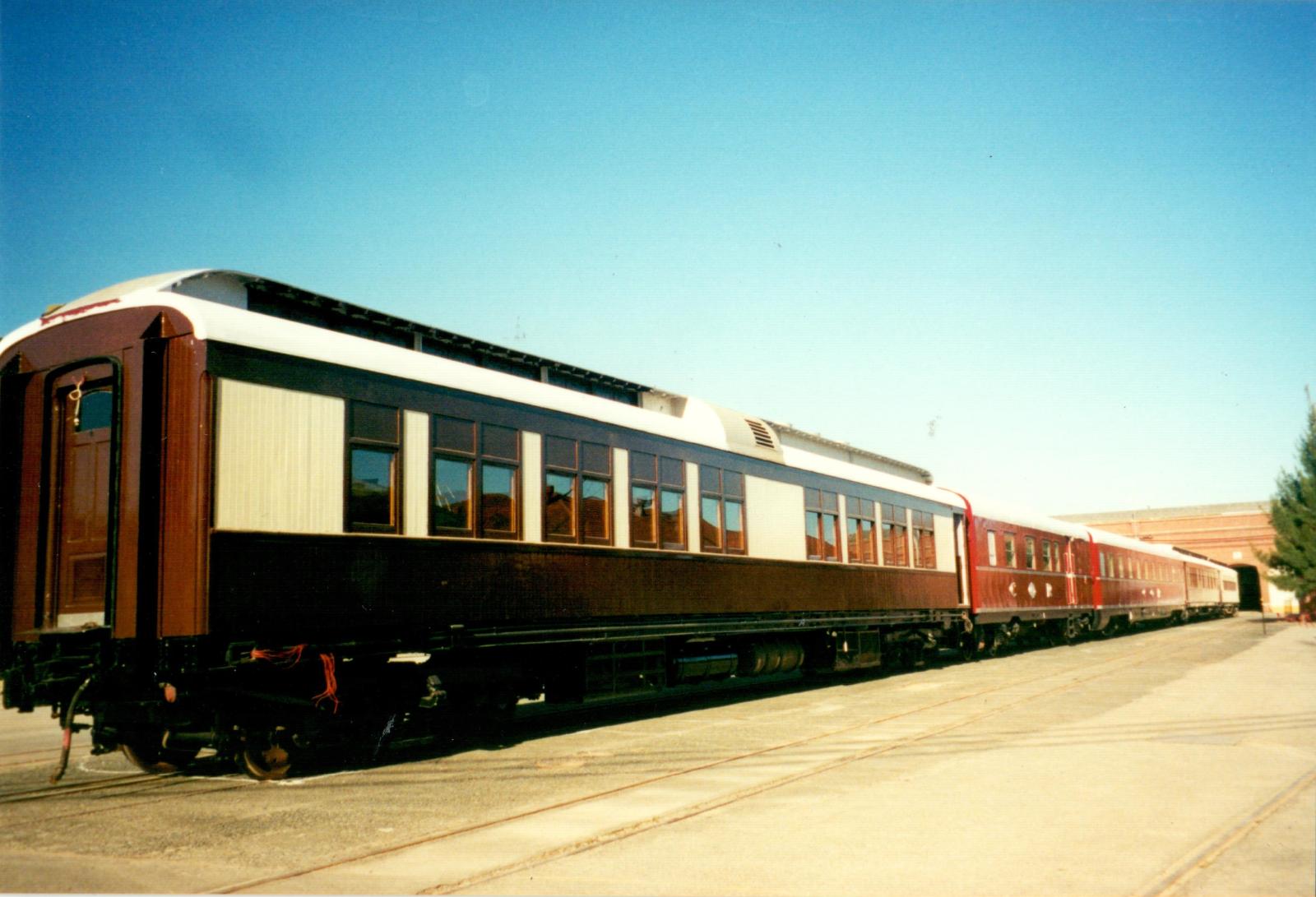
Scan this QR code to open this page on your phone ->


